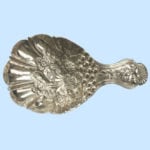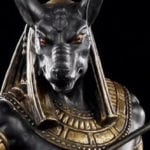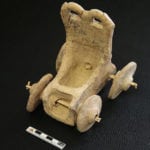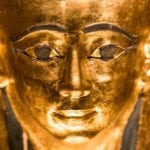 Weird Stuff
Weird Stuff  Weird Stuff
Weird Stuff  History
History 10 Legends Whose Last Moments Undid Their Glory
 Health
Health 10 Futuristic Ideas to Treat Common Medical Problems
 Weird Stuff
Weird Stuff Ten Surreal Attempts to Reverse Baldness
 Facts
Facts 10 U.S. Government Contingency Plans for the Unthinkable
 History
History 10 Weird Distractions from the Great Depression
 Movies and TV
Movies and TV 10 Fictional Kings Who Go from Good to Bad
 Food
Food The Fantastic Chemistry Behind Why 10 Popular Foods Taste So Good
 Technology
Technology 10 Futuristic Fungal Technologies
 History
History 10 Not-so-Spooky Events That Also Happened on October 31
 Weird Stuff
Weird Stuff 10 Things So Rare They’ve Only Been Found Once
 History
History 10 Legends Whose Last Moments Undid Their Glory
 Health
Health 10 Futuristic Ideas to Treat Common Medical Problems
Who's Behind Listverse?

Jamie Frater
Head Editor
Jamie founded Listverse due to an insatiable desire to share fascinating, obscure, and bizarre facts. He has been a guest speaker on numerous national radio and television stations and is a five time published author.
More About Us Weird Stuff
Weird Stuff Ten Surreal Attempts to Reverse Baldness
 Facts
Facts 10 U.S. Government Contingency Plans for the Unthinkable
 History
History 10 Weird Distractions from the Great Depression
 Movies and TV
Movies and TV 10 Fictional Kings Who Go from Good to Bad
 Food
Food The Fantastic Chemistry Behind Why 10 Popular Foods Taste So Good
 Technology
Technology 10 Futuristic Fungal Technologies
 History
History 10 Not-so-Spooky Events That Also Happened on October 31
10 Ingenious Ancient Timekeeping Devices
In modern times, we take our ability to know the exact time for granted; it’s on our walls, phones, computers, stoves, Blu-ray players, etc. Even analog clocks seem like ancient technology. But keeping track of time is something that mankind has struggled with for many thousands of years. This list will provide insight into the creativity and ingenuity of our ancestors as they tried to solve this age-old problem.
10 Rolling Ball Clocks
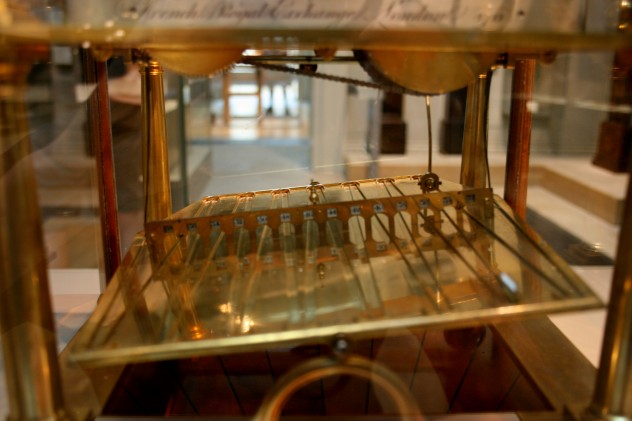
The rolling ball clock was invented by 17th century French engineer Nicolas Grollier. This clock kept time using rolling balls on a zigzag track. The path took anywhere from 15 seconds to a full minute for the ball to complete. Once it reached its destination, it tripped a mechanism that both moved hands of the clock forward and reversed the tilt to return the ball to its original position. However, the clock’s main flaw was the cleanliness of the track. When dust accumulated, it slowed the ball down, which resulted in very unreliable timekeeping.
9 Candle Clocks
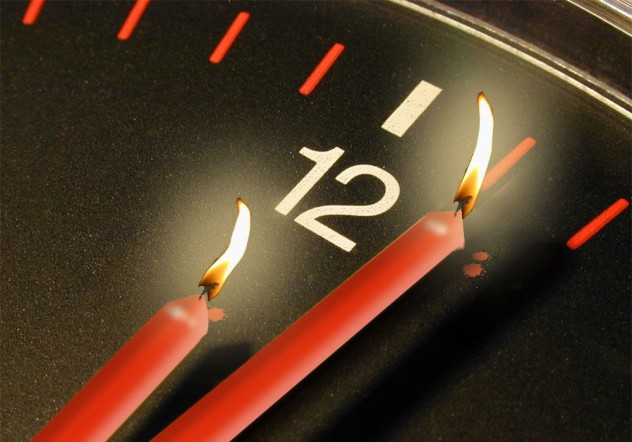
Candle clocks take advantage of a simple concept: the slow and consistent nature of a burning wax candle. By utilizing this process, our ancestors were able to keep steady track of the time. The clocks were created by engraving the length of the candle with evenly spaced markings. Each marking represented a single unit of time (such as one hour), and as the wax burned down, each hour would melt away. In order to determine how much time had passed since lighting the candle, you just checked the highest remaining marking.
Candle clocks could also function as alarm clocks. To use them this way, they inserted a heavy nail into the wax at the desired time mark. When the wax melted that far down, the nail would clatter into a metal tray below. Candle clocks have been referenced as early as A.D. 520 in China, but it remains unknown who first employed the technique or where it originated.
8 Water Clocks
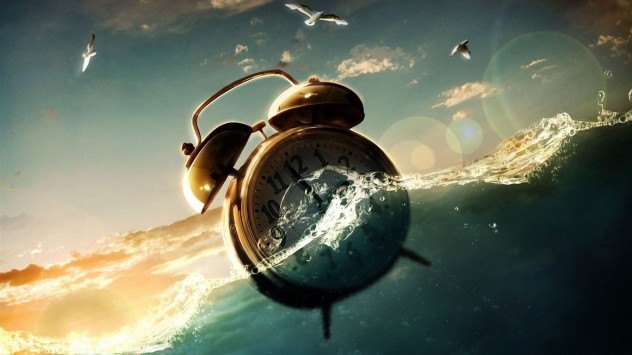
The water clock is the oldest (and possibly simplest) known timekeeping device, dating back to 16th century B.C. Babylon. These clocks used the steady flow of water to keep track of time. A large bowl or container would be filled with water and allowed to slowly drain from a spout on the bottom. The inside of the bowl was marked with the times, and you could determine how much time had passed by the water level in the bowl. You could also place a second bowl beneath the spout and measure the amount of water that accumulated.
However, the design had one major issue: the water flowed more slowly as the bowl emptied. This was the result of a decrease in pressure as the weight of the water in the bowl decreased. Toward the end, the water barely trickled and no longer kept accurate time.
7 Incense Clocks

Originating in 6th century China, the incense clock took advantage of both the slow-burning nature of incense and the pleasant aromas it produced. First, they would select a stick of incense based upon the length of time that needed measuring. Short sticks were used for short periods and long, spiraled sticks were used for days. Incense clocks were often very ornate and designed with an eye toward aesthetics. They were often displayed in decorative, handcrafted trays. Strings could be tied to the stick so the string would burn through and release a gong when the desired time arrived.
The most unique feature of the incense clock was its use of smell. The sticks could be layered with different fragrances so that each hour brought a new scent with it.
6 The Elephant Clock
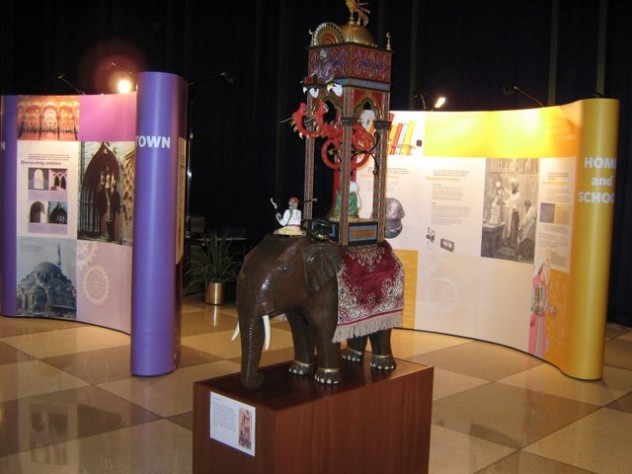
The elephant clock was truly a masterpiece of mechanical engineering. Invented in medieval times by the brilliant Al-Jazari, this clock was a beautiful culmination of many different ideas. The design was structured around a hollow elephant statue.
Various components of the clock were not only placed on top of the elephant, but housed within it as well. A giant ladle floating in a water reservoir was hidden in the elephant’s head. This ladle took 30 minutes to fill and served as the timing mechanism. When the ladle was full, it would sink. This, in turn, made a ball drop into the mouth of a serpent on top of the elephant. The serpent swung down, pulling strings that caused the elephant rider to pound a drum and signal the hour. Then, the serpent tipped back to its original position and the cycle repeated.
5 The Merkhet
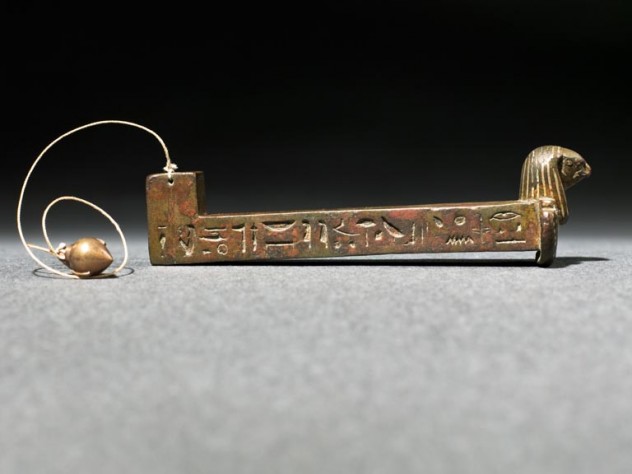
The ancient Egyptians have no shortage of impressive inventions credited to their civilization, and the merkhet is no exception. This “instrument of knowing,” as it roughly translates, was the world’s first astronomical tool. Traditionally, the Sun was the main way ancient people kept track of time. But the merkhet allowed the ancient Egyptians to keep time at night—with only the stars as their guide. The device consisted of a string with a weight attached to one end, enabling a straight line to be measured. When two merkhets were aligned with the North Star, they formed a celestial meridian in the sky. The time could then be determined by counting how many stars crossed this line.
4 Automaton Clocks
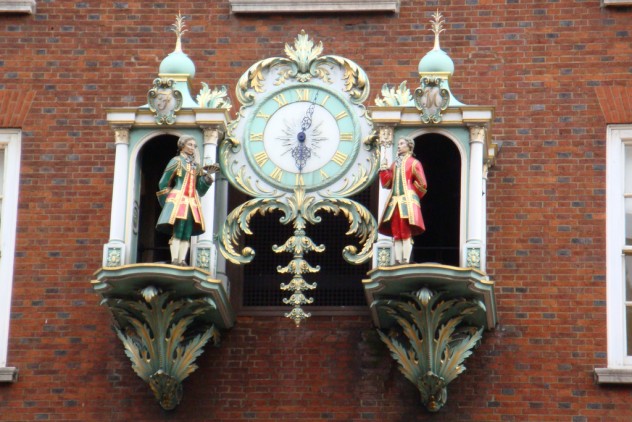
An automaton clock is a timekeeping device that uses animated figures to mark the passing of the hours. The most familiar example is the cuckoo clock. While a cuckoo clock is simple, automaton clocks are often extraordinarily elaborate—consisting of dozens of figures that perform very involved routines. Automaton clocks date back to the first century B.C., and are still being produced to this day.
One of the most famous is Munich’s Glockenspiel in the town square of Marienplatz, which consists of no less than 43 bells. During various points throughout the day, a team of 32 full-scale automaton figures dance and act out scenes from Munich’s history. Each 15 minute show concludes with a gold bird singing atop the magnificent structure.
3 Obelisks
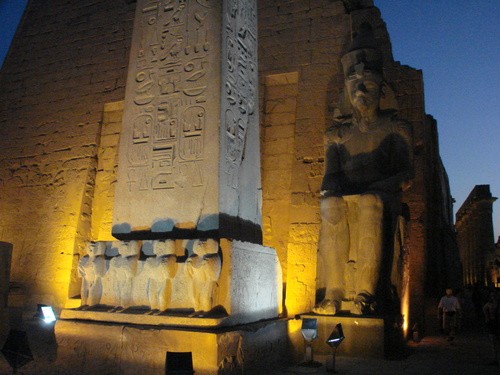
These tall rectangular structures, known as obelisks to the ancient Egyptians, took advantage of the shadow-creating effect of the Sun. The obelisks were pointed, and as the Sun moved across the sky, they cast a large shadow upon the ground. The path of the shadow could be mapped out with intervals that represented the hours of the day. The Egyptians constructed these monuments with great care, often adorning them with elaborate hieroglyphics. Their location was chosen to ensure that the angle of the shadow was accurate. In addition, markings on ancient obelisks indicate that the Egyptians made careful note of the Winter and Summer solstice.
2 Mercury Clocks

Water clocks in the ancient world had one major flaw: the water running through the clock was subjected to variations in temperature. It would freeze in the winter and evaporate in the summer. Zhang Sixun, an engineer during China’s Song Dynasty, solved this important dilemma. He was the first to use liquid mercury as the driving force in his clocks. Mercury stays in liquid form at temperatures as low as -39 degrees Celsius (-38.2 Fahrenheit). Because of this, Sixun’s devices did not freeze in the winter. Mercury also did not facilitate the rusting of mechanical parts like water did. As a result, Zhang’s ingenious mercury clock could function smoothly throughout the year.
1 Astronomical Clocks
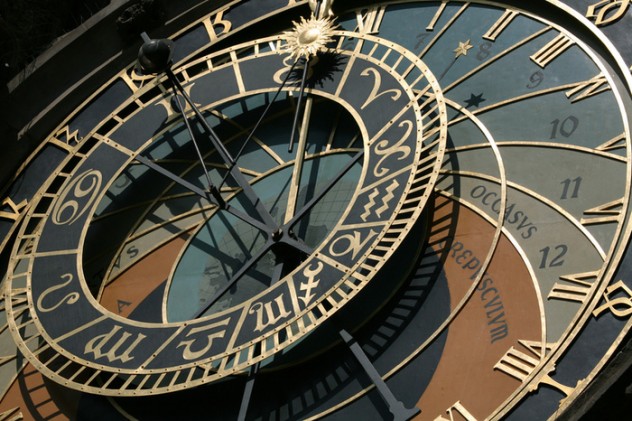
In addition to telling the time of day or night, an astronomical clock also keeps track of celestial information. For example, an astronomical clock might display a rotating map of the stars or show the phases of the moon. The most famous water-driven astronomical clock was designed by our old friend Al-Jazari in 1206. This device was one of the first programmable computers; it allowed the operator to reprogram the duration of each day to account for seasonal changes. The machine stood over three meters (9.8 feet) high and utilized many different functions. It tracked the orbits of the sun and moon, indicated the current zodiac sign, and featured a moving crescent moon that opened the doors for the figures to exit. To keep the mood festive, Al-Jazari even included animated figures that played music throughout the day.
Ross is a patent agent and Listverse fan.
